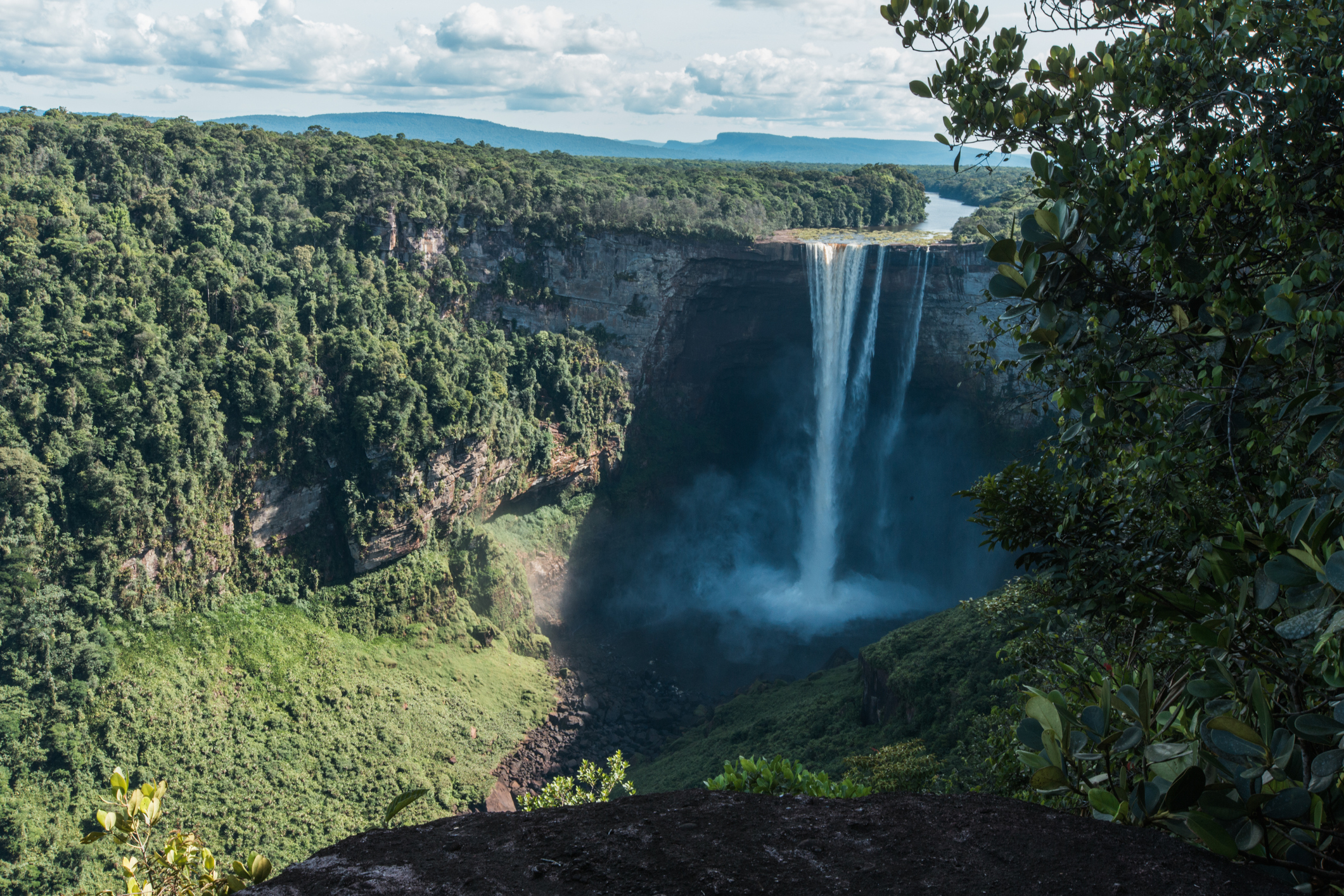
Guyana
Guyana’s almost untouched rainforest sits on an ancient geological formation called the Guiana Shield in the northeast of South America. Since 2009, Guyana and Norway have collaborated to promote green development in Guyana while keeping deforestation at low levels.
- Area: 214 969 km²
- Capital: Georgetown
- Population: 800 0000
- Forest cover: Nearly 85% of the country. The 78 500 indigenous people in Guyana make up the majority of the population in those regions.
- Guyana’s rainforest is immensely rich in biodiversity and is home to a large number of rare species e.g. 814 bird species, 225 mammal species, and 179 reptiles has been registered so far.
The biodiversity of Guyana’s rainforests is immensely rich and is home to a large number of rare species, such as the giant otter and jaguars. They provide the basis for existence for a number of indigenous peoples’ groups.
These rainforests also store and continue to absorb large quantities of carbon, provide income from eco-tourism, timber and other forest products, produce water, regulate precipitation and contribute a range of other indispensable ecosystem services.
 Photo: Hege Ragnhildstveit / NICFI
Photo: Hege Ragnhildstveit / NICFI
The rainforest covers about 85% of Guyana’s land mass. Unlike countries such as Brazil and Indonesia, deforestation in Guyana has been low historically and remains among the lowest in the world today.
Guyana is classified as a lower-middle-income country by the World Bank. The path to economic growth and development for poorer countries has historically included large-scale logging and other industries that contribute to the destruction of forest.
The Guyanese government wants to pursue an alternative path to development, and has a national strategy for economic and social development without increasing deforestation. The aim is to limit greenhouse gas emissions from deforestation, while also converting the energy sector to renewable energy and accelerating the development of low-carbon industries.
There is broad support for this approach, as stated in the Low Carbon Development Strategy 2030 and previous strategies.

Approximately 20% of the world’s remaining tropical forests are found in countries like Guyana, with high forest cover and very low deforestation rates.
In these countries, the international community ought to reward results in avoiding an increase in deforestation as opposed to reducing deforestation.
In the absence of economic incentives for such countries, there is a real risk that deforestation could ‘leak’ from current high deforestation countries to low deforestation countries. In order to avoid such leakages, countries that have maintained most of their forests should be rewarded financially for avoided deforestation. Guyana and Norway want their climate and forest partnership to present an international model for how this can be achieved in practice.

Norway and Guyana signed a climate and forest partnership in November 2009.
The forest partnership with Guyana has two result components:
- continued low deforestation
- improved governance in the forest sector.
The agreement between Guyana and Norway carefully sets out how payments for low deforestation are calculated based on deforestation results in previous years. For example, the payment is reduced gradually if the deforestation rate exceeds the 2010 level of 0.056% and halt completely if the deforestation rate reaches 0.1%. Results relating to improved governance in the forestry sector are based on a third party appraisal of agreed milestones.
Results
So far, Norway’s support to Guyana has added up to approximately NOK 1.5 billion in total for results relating to low deforestation and improved governance. The majority of this support has been channeled through the Guyana REDD+ Investment Fund (GRIF), administered by the World Bank.
Guyana spends the money on projects to realize Guyana’s updated Low Carbon Development Strategy. These are implemented by international partners like the UN Development Programme (UNDP), the Food and Agriculture Organization (FAO) and the Inter-American Development Bank (IDB) alongside Guyanese government institutions to advance land titling, ICT access and sustainable land development for indigenous peoples and local communities. In June 2022 Guyana’s largest ever solar project was launched to help Guyana leapfrog to a solar energy future.
 Photo: Marte Lid/ Norad
Photo: Marte Lid/ Norad
